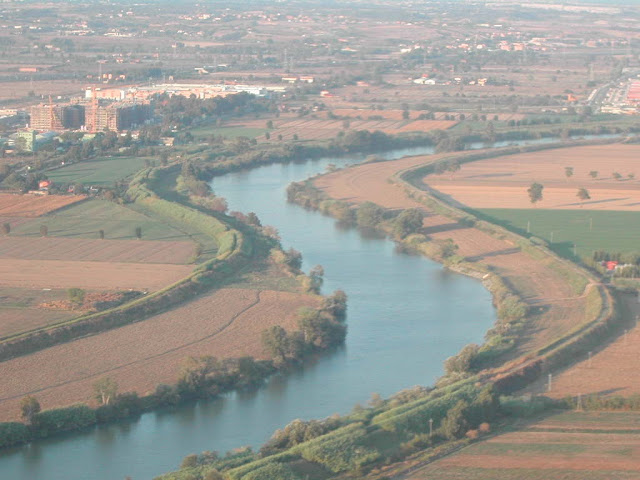Pope Stephen VI had a problem. Well, his sponsors had a problem. Stephen's predecessor (not his immediate predecessor, who had a William Henry Harrison-like truncated reign) was both fairly popular and not a huge fan of the current Holy Roman Emperor. Pope Formosus, in his time, actually invited rivals of the Emperor to invade Italy and seize Rome for themselves.
As you might imagine, this made the folks in charge (House Spoleto) a little bit unhappy. Having reaffirmed their claim on Rome by giving up any claim to the rest of Italy, they were finally in a position where they could get back at Formosus. Unfortunately for them, he had died in 896, and it was 897. They wanted to hold a trial and strip him of his title, but he was already dead. What were the Spoletos to do?
If you answered, "Dig up the old Pope's remains, dress him up in his old vestments, and put him on trial anyway," congratulations! You're just as batshit insane as old Pope Steve and company, who did exactly that.
 |
| Clint Eastwood later performed a misunderstood stage adaptation of the event at the Republican National Convention. |
It's hard not to think that the whole ordeal happened just to give me the surreal pleasure of writing these words: Pope Stephen dug up Pope Formosus' body and had it placed on the witness chair. He asked the corpse such leading questions as, "When you were bishop of Porto, why did you usurp the universal Roman See in such a spirit of ambition?" A deacon loyal to the (living) Pope provided the departed Pope's answers, which were presumably something like, "Probably because I'm such a dick."
The ghost of Formosus was found guilty of perjury, moving his bishopric office (which was super bad in canon law), and holding a bishopric before being ordained. His body was ceremoniously stripped of vestments, three fingers of his right hand were removed (the ones used for blessing), and all acts and ordinations he performed were declared null and void. He was then buried in a graveyard for foreigners. Stephen's faction wasn't satisfied with that, so they dug him back up a short while later and haphazardly tossed him into the Tiber River.
 |
| Which they presumably then charged with murder. |
Unluckily for Stephen, people in the late 9th Century weren't actually all that stupid. They saw the farcical trial for what it was: petty papal politics. They also saw it as horrifically disrespectful of the dead. Not just any dead, either. The dead Pope. God's literal voice on Earth, according to Catholic doctrine. Treating any body with callous disrespect would have been bad. Treating a pope's body led directly to uprising.
Rumors abounded that the body of Formosus washed up on the shores of the Tiber and began performing miracles. Despite having been dead for some time, the Cadaver Synod made him a martyr. A few months later, an uprising led to Pope Stephen VI being deposed, imprisoned, and later strangled to death in jail. Further trials featuring dead bodies were banned in what I hope was called the "Oh My God, I Can't Believe We Have to Specify This" Edict.
 |
| "It's Like Having to Specify That You Shouldn't Rape Altar Boys." |
Formosus was post-posthumously acquitted and reburied at St. Peter's Basilica, and the results of the trial were declared dumb as hell and thus void. In 904, Pope Sergius III, who served as a judge at the Synod, more or less said "Nuh uh." While he didn't bother digging up the corpse again, he declared the original trial's result to be legitimate, requiring all the clergy ordained by Formosus to go through the process again.
That was pretty much the end of it. A bit of a compromise. A tit for tat, with the tit being "Everyone has to say I was right all along" and the tat being "I won't subject a corpse to another line of questioning."
Holy shit.

No comments:
Post a Comment